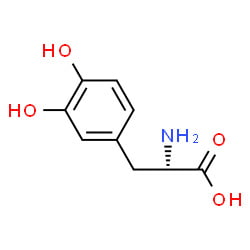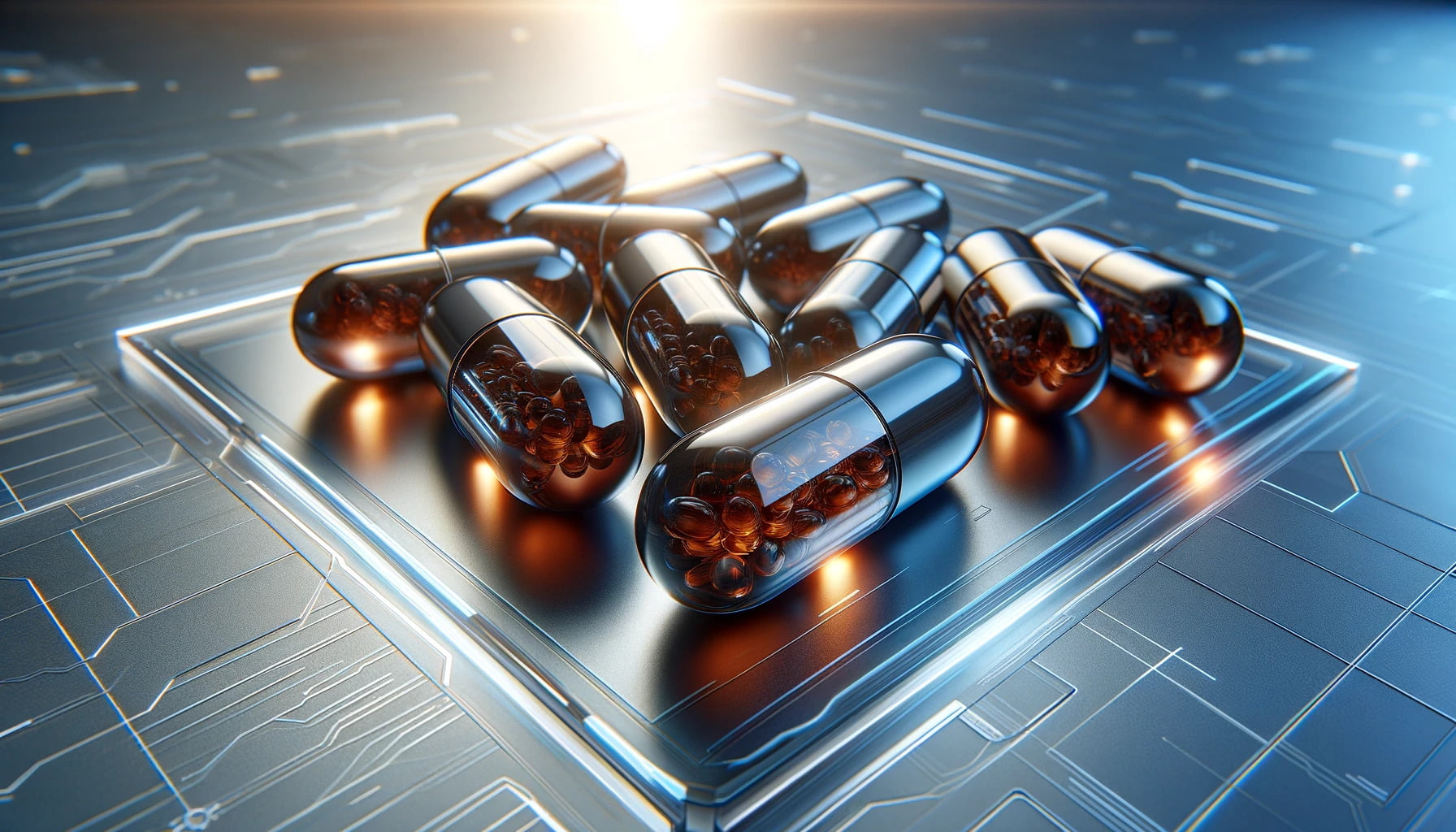
L-Dopa is used as a potent medication to treat Parkinson’s disease symptoms.
With its ability to cross the blood-brain barrier and replenish dopamine levels, L-Dopa has become a popular choice among individuals seeking to boost their cognitive performance.
This article explores the history, mechanism of action, cognitive benefits, dosage, and potential side effects of L-Dopa.
Table of Contents
What Is L-Dopa?

L-Dopa (also known as levodopa or L-3,4-dihydroxyphenylalanine) is a naturally occurring amino acid precursor of the neurotransmitter dopamine.
It’s a medication that has U.S. Food and Drug Administration approval (since 2018) to treat Parkinson’s disease symptoms by increasing dopamine levels in the brain.
L-Dopa is converted to dopamine by the enzyme dopa decarboxylase, causing its therapeutic effects.
| Chemical formula | C9H11NO4 |
| Melting point | 278-280°C |
| Molecular weight | 197.19 g/mol |
| Molecular weight | 197.19 g/mol |
| Solubility | Soluble in water, slightly soluble in alcohol |
What Is the History and Discovery of L-Dopa?
L-Dopa was discovered in the early 20th century, but its therapeutic potential was first recognized by Swedish scientist Arvid Carlsson in the 1950s.
Carlsson’s research demonstrated that L-Dopa could alleviate Parkinson’s symptoms caused by dopamine deficiency. In 1970, L-Dopa was approved as a treatment for Parkinson’s disease, revolutionizing the management of the condition.
Can L-Dopa Be Obtained from Dietary Sources or Foods?
L-Dopa can be obtained from certain dietary sources (Prosopis chilensis, Pileostigma malabarica, Phanera vahlis), particularly the seeds of the Mucuna pruriens plant, also known as velvet bean.
Mucuna pruriens seeds contain the most high concentrations of L-Dopa, with up to 5% by weight.
However, the amount of L-Dopa obtained from dietary sources is generally insufficient for therapeutic purposes, and the medication form is preferred for the most potent results.
What Are the Pharmacokinetic Properties of L-Dopa?
The pharmacokinetic properties of L-Dopa include:
- Absorption: Rapidly absorbed from the small intestine
- Distribution: Crosses the blood-brain barrier
- Metabolism: Decarboxylated to dopamine by aromatic L-amino acid decarboxylase
- Elimination: Excreted in the urine as metabolites
- Half-life: 1-2 hours
- Bioavailability: 30-40%
- Plasma protein binding: 10-30%
What Is the Bioavailability of L-Dopa?
The bioavailability of orally administered L-Dopa is relatively low, ranging from 30-40%.
This is due to extensive first-pass metabolism by the enzyme dopa decarboxylase in the gut and liver.
What Is the Half-Life of L-Dopa?
The half-life of L-Dopa is relatively short, ranging from 1-2 hours.
This means that the drug is rapidly eliminated from the body, necessitating frequent dosing to maintain therapeutic levels.
The short half-life also contributes to the “wearing off” effect, where the medication’s benefits diminish between doses as dopamine levels fluctuate.
What is the Mechanism of Action of L-Dopa?
The mechanism of action of L-Dopa involves its conversion to dopamine in the brain.
L-Dopa crosses the blood-brain barrier, unlike dopamine itself, and is then converted to dopamine by the enzyme aromatic L-amino acid decarboxylase (AAAD) in dopaminergic neurons.

What Are the Cognitive Benefits of L-Dopa?
While primarily used to treat motor symptoms of Parkinson’s disease, L-Dopa may also provide cognitive benefits:
- Improved working memory
- Enhanced learning and memory consolidation
- Increased mental stamina
- Improved mood and motivation
- Increased cognitive flexibility
- Better planning and problem-solving abilities
These cognitive benefits are likely mediated by L-Dopa’s effects on dopamine levels in the prefrontal cortex and other brain regions involved in higher-order cognitive functions.
How Does l-Dopa Improve Working Memory?
L-Dopa improves working memory by increasing dopamine levels in the prefrontal cortex, the brain region responsible for executive functions like working memory.
According to a study by Cools et al. (2008), L-Dopa administration led to improved performance on working memory tasks in healthy volunteers.(1)
The study found that L-Dopa specifically enhanced the updating and manipulation of information in working memory, rather than just the maintenance of information.
How Does L-Dopa Enhance Learning and Memory Consolidation?
L-Dopa enhances learning and memory consolidation by modulating the activity of dopamine receptors in the hippocampus, a brain region critical for forming new memories.
A study by Knecht et al. (2004) demonstrated that L-Dopa administration improved verbal learning and memory in healthy older adults.(2)
The researchers attributed this effect to L-Dopa’s ability to optimize dopamine signaling in the hippocampus, facilitating the formation and strengthening of new neural connections.
How Does L-Dopa Increase Cognitive Flexibility?
L-Dopa increases cognitive flexibility by enhancing dopamine transmission in the striatum, a brain region involved in task switching and adaptive behavior.
As demonstrated by a study by Cools et al. (2001), L-Dopa administration improved performance on a task-switching paradigm in patients with Parkinson’s disease.(3)
The authors suggested that L-Dopa’s ability to restore dopamine levels in the striatum underlies its positive effects on cognitive flexibility.
How Does L-Dopa Improve Mood and Motivation?
Dopamine is a neurotransmitter that plays a crucial role in regulating mood, motivation, and reward-seeking behavior. Additionally, dopamine is involved in the brain’s reward system, which reinforces behaviors that lead to positive outcomes.
By boosting dopamine levels, L-Dopa helps to improve motivation and mood, as found in the research from Czernecki. (4)
What Are the Other Potential Uses of L-Dopa?
In addition to treating Parkinson’s disease, L-Dopa has been investigated for other potential uses:
- Restless leg syndrome
- Dopamine-responsive dystonia
- Cognitive enhancement in healthy individuals
- Treatment of depression and anhedonia
However, more research is needed to confirm the efficacy and safety of L-Dopa for these indications.

How Is L-Dopa Administered and Dosed?
L-Dopa is primarily administered orally, either as a standalone medication or in combination with other drugs.
The typical starting dose is 50-100 mg taken 3-4 times daily, with the dose gradually increased based on clinical response and tolerability. The maximum recommended dose is 800-1000 mg per day, divided into smaller doses.
What Are the Different Dosage Forms of L-Dopa?
L-Dopa is available in several dosage forms:
- Tablets (immediate-release and controlled-release)
- Capsules
- Orally disintegrating tablets
- Enteral suspension
- Inhalation powder (Inbrija)
The choice of dosage form depends on individual patient needs, ability to swallow, and desired onset and duration of action.
Are There Any Special Instructions for Taking L-Dopa?
When taking L-Dopa, it’s important to follow these special instructions:
- Take L-Dopa at least 30 minutes before or 1 hour after meals: Avoid interference with absorption.
- Avoid taking iron supplements or multivitamins containing iron within 2 hours of L-Dopa: Iron can chelate the drug and reduce its absorption.
- Inform your doctor about all medications and supplements you are taking: L-Dopa can interact with certain drugs.
- Do not stop taking L-Dopa abruptly: This may worsen Parkinson’s symptoms. Any changes in dosage should be gradual and under medical supervision.
What Are the Potential Side Effects and Risks of L-Dopa?
While L-Dopa is well-tolerated, it can cause side effects, particularly at higher doses or with prolonged use.
What Are the Common Side Effects of L-Dopa?
Common side effects include:
- Nausea and vomiting
- Dizziness and orthostatic hypotension
- Headache
- Dry mouth
- Insomnia and vivid dreams
- Anxiety and agitation
These side effects are usually mild and can be managed by adjusting the dosage or taking L-Dopa with food to minimize gastrointestinal upset.
What Are the Serious or Severe Side Effects of L-Dopa?
The serious or severe side effects of L-Dopa that warrant medical attention include:
- Dyskinesias: Involuntary, uncontrolled movements that can affect the face, limbs, and trunk. Occurs in up to 80% of patients treated with L-Dopa for 5-10 years.
- Hallucinations and psychosis: Visual or auditory hallucinations, delusions, and paranoia. Affects 15-40% of patients on long-term L-Dopa therapy.
- Compulsive behaviors: Irresistible urges to engage in activities like gambling, shopping, eating, or sex. Affects 6-17% of patients taking dopaminergic drugs.
- Neuroleptic malignant syndrome: A rare but life-threatening reaction characterized by fever, muscle rigidity, altered consciousness, and autonomic instability. Occurs in <1% of patients.
These severe side effects may require dose reduction, switching to alternative medications, or additional treatments to manage the symptoms.
Are There Any Drug Interactions with L-Dopa?
Yes, L-Dopa can interact with several drugs:
- MAO inhibitors: Contraindicated due to risk of hypertensive crisis
- Antipsychotics: May reduce the effectiveness of L-Dopa
- Blood pressure medications: L-Dopa may enhance their hypotensive effect
- Metoclopramide: Antagonizes the effects of L-Dopa
- Iron supplements: Can chelate L-Dopa and reduce its absorption
It’s essential to inform your doctor about all medications and supplements you are taking to avoid potential drug interactions.
How Is L-Dopa Used in Combination with Other Drugs or Supplements?
L-Dopa is often used in combination with other drugs or supplements to enhance its efficacy and manage side effects:
- Carbidopa or benserazide (dopa decarboxylase inhibitors): Prevent peripheral metabolism of L-Dopa, increasing its bioavailability and reducing gastrointestinal side effects.
- COMT inhibitors (entacapone, opicapone): Block the catechol-O-methyltransferase enzyme, prolong the half-life of L-Dopa, and reduce “wearing off” fluctuations.
- MAO-B inhibitors (selegiline, rasagiline): Prevent the breakdown of dopamine in the brain, enhancing the effect of L-Dopa.
- Amantadine: Can help reduce dyskinesias induced by long-term L-Dopa use.
- Vitamin B6 (pyridoxine): Should be avoided in high doses as it can accelerate the peripheral metabolism of L-Dopa.
What Are the Benefits of Using L-Dopa with Carbidopa or Benserazide?
Combining L-Dopa with carbidopa or benserazide offers several benefits:
- Increased bioavailability of L-Dopa by 60-80%
- Reduced peripheral side effects (nausea, vomiting)
- Lower L-Dopa doses needed for therapeutic effect
- More stable and predictable clinical response
Carbidopa and benserazide are dopa decarboxylase inhibitors that prevent the conversion of L-Dopa to dopamine in the peripheral tissues, allowing more L-Dopa to reach the brain.
- Cools, Roshan, and Mark D’Esposito. “Inverted-U-shaped dopamine actions on human working memory and cognitive control.” Biological psychiatry vol. 69,12 (2011): e113-25. doi:10.1016/j.biopsych.2011.03.028↩
- Knecht, Stefan et al. “Levodopa: faster and better word learning in normal humans.” Annals of neurology vol. 56,1 (2004): 20-6. doi:10.1002/ana.20125↩
- Cools, R et al. “Enhanced or impaired cognitive function in Parkinson’s disease as a function of dopaminergic medication and task demands.” Cerebral cortex (New York, N.Y. : 1991) vol. 11,12 (2001): 1136-43. doi:10.1093/cercor/11.12.1136↩
- Czernecki, V et al. “Motivation, reward, and Parkinson’s disease: influence of dopatherapy.” Neuropsychologia vol. 40,13 (2002): 2257-67. doi:10.1016/s0028-3932(02)00108-2↩
